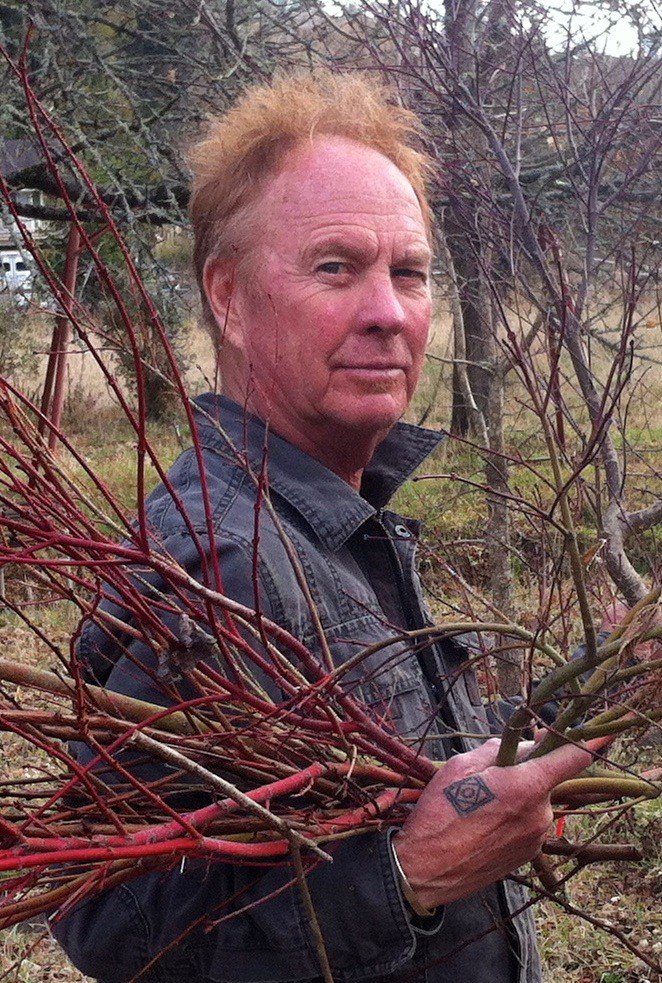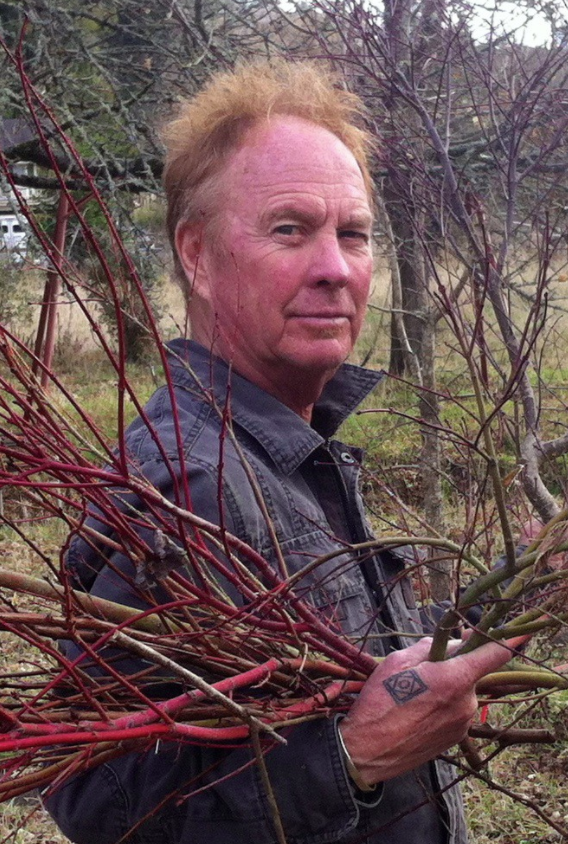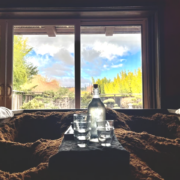The Right Cut – A Master Pruner’s Journey
By Abby Bard
Aesthetic pruning is a living art form combining the skill of the pruner, the science of horticulture, and the essence of a tree. While the emphasis is on beauty, maintaining the vitality of the tree is just as important; aesthetic pruners make the right cuts for the right reasons. For Master Pruner Michael Alliger, this art is a balance between the present and the future.
In the 1980s, Alliger was eager for change from a career in retail; he felt an inner calling to work outside. “I thought you had to be a gardener to do that,” he explained, so he enrolled in a plant identification class at Merritt College in Oakland. “I found I had a facility for it. My passion just exploded! I had never been happier.”
He had grown up in the suburbs, surrounded by lawns. “I hated mowing the lawn, so it was such a surprise to me. I found a whole new world to walk into. Suddenly the streets of Oakland came alive as I got to know the plants—the world went from two dimensions to three dimensions, from black and white to color.”
In 1986, while studying horticulture at Merritt, Alliger met Dennis Makishima, a Japanese-American student from El Cerrito. Wanting to connect with his Japanese heritage, Makishima went to bonsai clubs to learn that art, and realized that he could take elements of bonsai and apply them to landscape pruning. One day, Alliger watched Makishima prune a Japanese maple. “I was transfixed. I knew that was what I wanted to do. It felt like home. I asked if I could follow him around and watch him work.” Their relationship evolved into a formal apprenticeship.
“Dennis is brilliant,” Alliger said. “He’s a visionary, a brilliant organizer and strategist and leader.” Makishima suggested to Merritt College that they offer classes in aesthetic pruning and asked Alliger if he would like to teach. “I taught an Introduction to Aesthetic Pruning for a half-day each month, and Dennis unfurled this whole series of classes.” The classes that Makishima organized and taught explored plant material, pruning for the focal point, pruning for the big picture, Japanese maples, pines and conifers, flowering trees, pruning as a career, and finding the essence of the tree. A year later, Makishima offered those classes to Alliger, who would teach most of them for the next 20 years.
The two men organized an informal pruning club that continues to this day at Merritt. “People could drop in or drop out any time. We would volunteer at schools, churches or parks. It was mutually beneficial. The students would get experience and the trees were cared for,” Alliger said.
Makishima also envisioned a professional organization for aesthetic pruning, similar to the International Society of Arboriculture (ISA); and he and Alliger were among the founders of the Aesthetic Pruners Association (APA), a non-profit that promotes the craft of aesthetic pruning and supports professional pruners in their work. This group sets the standards for aesthetic pruning.
Alliger explained the focus of the APA. “Our school of pruning is in the lineage of Japanese garden pruning, which is distinct from European pruning. Principles of the Japanese lineage are pruning to the human scale, size control and containment. The artistic model is based on nature as you see it, nature in essence. We seek both containment and natural expression. The overarching factor is garden design: to have the tree or shrub fit the garden design and still honor the natural form. Our approach works on fruit trees, too, but it’s different from pruning skyline trees, like redwoods and oaks.
“Unlike most animals, plants and trees have the ability to regenerate lost parts. Follow-up pruning requires consistency and has the potential to give the tree longer life. In order for pruning to be structurally sound, it needs to be continually applied—you can’t just do it once.” Some bonsai trees in Japan are 500 to 600 years old. Because these trees outlive human beings, their care has been handed down from generation to generation. For Alliger, “It’s all about love and all about care.
“While the school of thought comes from Japanese pruning, we are not pruning Japanese gardens—we are pruning California gardens, American gardens. But the principles are universally applied,” said Alliger, who is exploring working with native materials to find their potential. The idea of containment and structural pruning has not happened before with our native woody plants.
“I’m experimenting at home with buckeye—how old do they have to be before they flower? How small can they be and still flower? It’s so exciting to think about! The Japanese have been working with landscape plant material in their gardens for 1,100 years. Here, we’ve been doing it for only 75 years, and we’re in the baby stage of realizing the possibilities and finding out which ones are going to be functional in gardens from the point of view of beauty and containment. The more we use our own plant material, the more comfortable we feel. That sense of context is salubrious.”
A powerful part of Alliger’s exploration is in joining the stream of people who have been doing this work for centuries; now he is able to pass it forward. After moving to Sebastopol in 1992, he took on the aesthetic pruning of the Japanese-style gardens at Osmosis Day Spa Sanctuary in Freestone. While he continues to maintain those trees, most of his work is done in private gardens around Sonoma County. Retiring from teaching at Merritt in 2011, he currently offers an annual one-day, hands-on class in Aesthetic Pruning for the Master Gardeners of Marin County. He also writes a garden blog for the Osmosis Newsletter which you can sign up for here.
The following link has a brief video demonstrating “Aesthetic Pruning of Maples” on YouTube. A more extensive tutorial on that subject is available for purchase from GardenTribe.com.
You can contact Michael Alliger by email at twigchaser@earthlink.net. Learn more about the APA by visiting their website AestheticPrunersAssociation.org.



